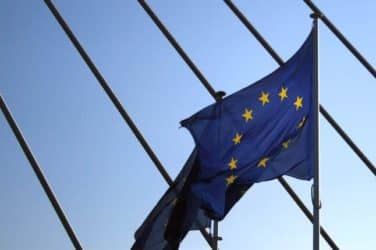
The European Commission is launching a task force on financial technology as participants in a Deutsche Bank survey expect distributed ledger technology to be actively used within five years.
The European Commission said today it is launching a task force on financial technology to develop a comprehensive strategy on fintech and present policy suggestions and recommendations in the first half of next year.
Roberto Viola, director general for DG Connect (communications networks, content & technology) and Olivier Guersent, director general DG Financial Stability, Financial Services and Capital Markets Union, said in a blog the financial services industry is being disrupted through new technologies ranging from the continuing increase in processing and storage capacity, cloud computing, social network and platform technologies, artificial intelligence, mobile technologies and distributed ledger technology or blockchain.
“More changes are on their way with the advent of new agile innovative players with new business models, user-friendly consumer interfaces, peer-to-peer services, or advanced automated tools,” they wrote.
As a result the task force will bring together services responsible for financial regulation, the digital single market, competition and consumer protection policy.
A survey from Deutsche Bank Global Transaction Banking, “Powering the flow of global capital, capital markets investor insights” found that 39% of participants expect distributed ledger technology to be actively used within five years. The bank commissioned FT Remark to survey 200 market participants in the summer of this year to examine what was influencing their strategic thinking.
Deborah Thompson, head of custody and clearing at Deutsche Bank, said in the report: “I found it interesting that our survey’s respondents were clearly positive about the potential impact of blockchain — almost all participants saw it as either moderately or completely disruptive to existing business models — and an overwhelming majority believe it will be actively used within the next six years.
Satvinder Singh, head of global securities services and head of global transaction banking, EMEA (ex. Germany) at Deutsche Bank, said in the report that the bank is collaborating with both infrastructure and fintech experts from across the market, to discover how digital assets and digital enablers can address process opportunities and the management of an asset through its life cycle.
In addition the survey found that investors have been positive about their experience using TARGET2-Securities, the European Central Bank’s project to harmonize securities settlement in the Eurozone.
Singh said in a report that 51% of respondents are positive about their experience using T2S for settlements, while 27% said it has been somewhat or very negative and 22% said they haven’t used T2S or that it was too early to say.
“It is a nascent platform and, as time passes, I expect that number will increase, because T2S fundamentally shifts the way our clients look at post-trade Europe,” he added.
T2S is a single IT platform which allows settlement in central bank money across borders, central securities depositories and currencies so there is no difference between domestic and cross-border transactions. The platform began operating a year ago after being launched by the European Central Bank in 2008 to end fragmentation in securities settlement across the Eurozone as the cost of cross-border transactions could be 10 times more expensive than domestic transactions.
The Deutsche Bank report said individual comments by respondents were almost exclusively positive about T2S. One chief operating officer of a UK asset manager said in the survey: “It has simplified the way we carry out settlements. It is a unified system, cross-border fees are less and it has reduced the risks we face.”
In September the ECB said T2S was processing 45% of the total transaction volume expected after the end of full migration to the project to harmonize securities settlement in the Eurozone in 2017. This was due to the third wave of migration when five central securities depositories – Euroclear Belgium, France and Nederland; VP Lux (Luxembourg) and VP Securities (Denmark) – joined T2S.
The fourth migration wave to T2S is planned for 6 February 2017 and will include Clearstream, Deutsche Börse’s CSD, which is the project’s largest market.
More than three-quarters, 77%, of respondents to the Deutsche survey expect either some or a dramatic increase in consolidation among sub-custodians in Europe as a result of T2S. “However, any push towards a consolidation of network providers is likely to be counterbalanced by pressure to rotate market counterparties in the face of potential concentration and other risks: 71% of survey respondents say they foresee moderately more or significantly more pressure to address such risks during the next five years,” added the report.
Thompson said in the report that the real benefits of T2S are readier access to liquidity and more seamless movement of collateral across the participant markets.
She added that T2S is having a major impact on the overall structure of the custody business and it is natural to expect consolidation among sub-custodian networks across the T2S markets.
“We are already seeing a reduction in the overall number of banks offering sub-custodial services across Europe,” added Thompson. “But, countering this trend, there is potential concern among some investors about concentration in the sub-custody business. So we will probably arrive at a balance.”
Thompson continued that some global custodians are already moving away from a full-service custody, or bundled, model towards a modular approach in which safekeeping functions are separated from asset servicing.
More on post-trade:






